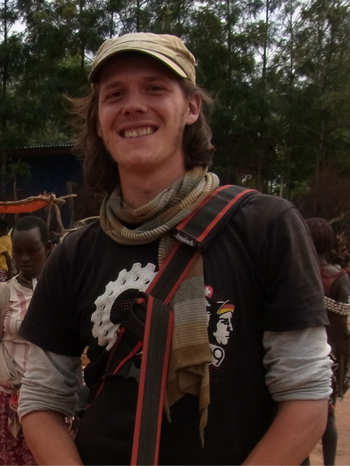Dr. Martin Park

Landscape Archaeology and Architecture (LAA)
Physical Geography
Mai 2016
Promotion
2007 – 2012
Study of Geography in Dresden: focus on Physical Geography, secondary subjects Soil science, Forestry Final degree 05/2012
10/2007 – 07/2008
Student assistant at the Department of Geography at the faculty of Forest-, Geo-, Hydro Sciences of the TU Dresden
Mid-Holocene Landscape Development in the Carpathian Region - Pastoralism, Climate and their Interdependencies
Within the dissertation I will investigate anthropogenic landscape changes that arose due to grazing pressure in selected semi-arid to humid natural environments between the Near East and Northwestern Europe from 7000 to 4000 BP. By combining a landscape sensitivity analysis with an extensive literature research on dated sediments, vegetation cover, climate variability and human activity I will examine the hypothesis that degradation processes resulting from agriculture had such a strong impact on the ecological balance of the landscape that they led to intensified erosion processes.
Within this dissertation, Martin Schumacher investigated changes of Holocene environmental dynamics related to increasing pastoral activities in the Carpathian region. The project has been developed in the context of the Topoi Research Group (A-4-) The Textile Revolution with the central research question focusing on the emergence and spread of early wool economies.
The research project included two independent studies on Holocene environmental change and two different spatial scales have been addressed. A previous study reflected the conceptual and thematic integration of the different research projects within the research group (A-4) Textile Revolution. This gave implications for a constructive contribution to the interdisciplinary research approach. Increment value due to the integration of different scientific fields may only be obtained if basic parameters of the single projects are thoroughly aligned and specific understanding of the different research objects is transparent.
The regional and supra-regional scales have been addressed performing a standardized analysis of published pollen data (Figure 1). Besides others, the plant species Plantago lanceolata, Plantago major/media, Polygonum aviculare and Rumex acetosa/acetosella are indicative of soils that were compacted by trampling of grazing animals and are called secondary indicator species. Thus, the occurrence of pollen of these secondary indicator species points to concurrent herding activities. The amount of arboreal pollen in a sediment sample can be understood to represent the tree cover in the surrounding area and decreasing forest canopy may be connected to the transition from closed forests to open forests and pasture. Published pollen data from 21 sites were compiled and aggregated to 500-year time slices. The two proxies “secondary indicator species” and “arboreal pollen” were combined in a fuzzy model and based on a semi-quantiative classification intensities of herding practices were derived and assigned to the different time slices.
The local scale has been addressed by investigating fan deposits of tributary valleys in the Bükk Mountain foreland in northern Hungary. The focus was put on the reconstruction of Holocene landscape development and on the role of prehistoric human activities in forming the landscape as it appears today. The study was conducted in a c. 10 km long section of the Hór valley. The area has been continuously settled since the Palaeolithic and the large variety of environmental resources provided the basis for a range of economic activities Furthermore, five of the sites included in the supra-regional scale study are located within 50 km distance from the studied valley section. A field trip was conducted in cooperation with the Department of Environmental Sciences and Landscape Ecology of the Eszterhazy Karoly University in Eger, Hungary during which geomorphological mapping was done and sediment samples were recovered.
Results
Results of the standardized data evaluation imply an increase of herding activities in the course of the Chalcolithic and Early Bronze Age periods. In the South Carpathians, increased herding indication is evident for the Early Chalcolithic, while vegetation disturbance during the Neolithic appears to be triggered rather by climate influences than by human activity. In contrast, grazing impact in northern Hungary increases only during the Late Chalcolithic – Early Bronze Age transition. This is synchronous with enhanced sediment deposition in the Bükk Mountain foreland. However, grazing impact was overall low and significant land degradation due to pastoral activities are not implied by the data.
This dissertation project was successfully completed within the Research Group A-4 The textile revolution of the Excellence Cluster 264 Topoi.
